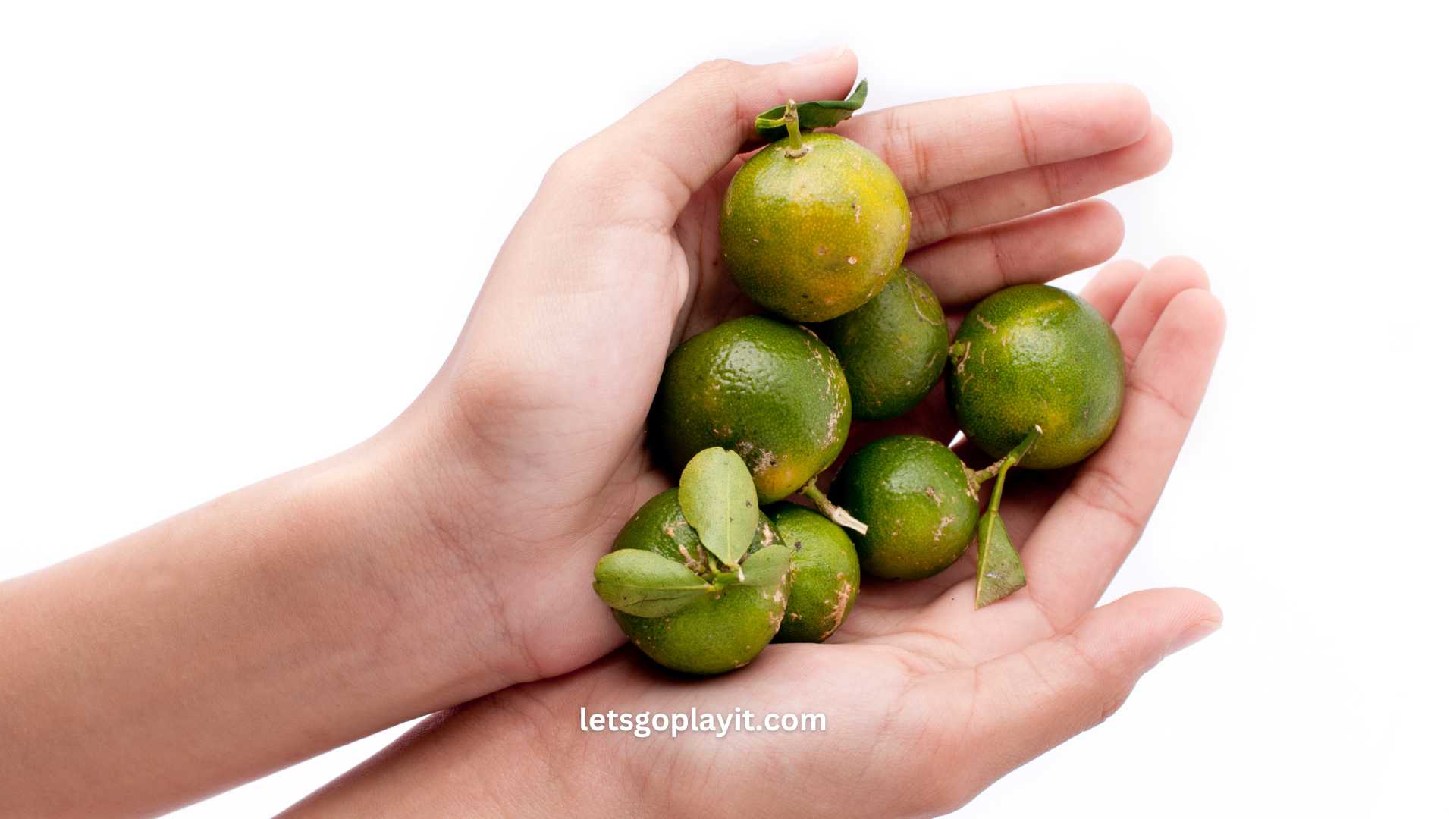Unleashing Fun with Calamansi: A Deep Dive into the Calamansi Fruit Relay
Hey there, fellow game enthusiasts and curious minds! Today, we’re embarking on a delightful journey into the world of Filipino party games, with a spotlight on a unique and entertaining game that’s sure to add zest to any gathering – the Calamansi Fruit Relay.
This game, a testament to the creativity and fun-loving spirit of the Filipino culture, combines skill, balance, and laughter in equal measure. Let’s peel back the layers of this citrusy challenge and discover what makes it a must-try at your next party!
Possible Origin of the “Calamansi Fruit Relay”
The Calamansi Fruit Relay, like many traditional Filipino games, is rooted in the communal and festive spirit of the Philippines. While its exact origin is as elusive as the perfect balance needed to win the game, it’s safe to say that this game sprouted from the rich soil of Filipino ingenuity.
Calamansi, a small but mighty citrus fruit, is a staple in Filipino households, not just in culinary delights but now, as we see, in playful competition as well. This game likely evolved from the simple joy of turning everyday objects into sources of entertainment and bonding.
How to Play “Calamansi Fruit Relay”
Let’s dive into the nitty-gritty of how to play this game, ensuring you’re equipped to host a round (or several) at your next party.
Step 1: Gather Your Materials
First things first, you’ll need a few simple items:
- Spoons: One for each participant. The bigger the spoon, the easier the game, so choose according to the challenge level you desire.
- Calamansi fruits: One for each player. These small, tangy fruits are the stars of the show. If calamansi isn’t available, any small citrus fruit or similarly sized object can work as a substitute.
- A designated course: Set up a start and finish line. The course can be straight for simplicity or include turns and obstacles for added difficulty.
Step 2: Explain the Rules
Before the game begins, make sure all players understand the rules:
- Players must place the spoon in their mouth, with the handle sticking out. No hands allowed once the game starts!
- The calamansi fruit must be placed on the spoon, and the player must carry it through the designated course without using their hands.
- If the calamansi falls, the player must stop, pick up the calamansi, return to the start line, and begin again.
- The first player to complete the course without dropping the calamansi wins.
Step 3: Line Up the Participants
Have all players line up at the starting line with their spoons in their mouths and calamansi placed on the spoon. Ensure there’s enough space between players to prevent collisions and calamansi casualties.
Step 4: Ready, Set, Go!
On your mark, get set, go! Players start the relay, carefully navigating the course you’ve set up. The tension and concentration on their faces will be a sight to behold, as will the inevitable giggles and gasps as calamansi fruits begin their gravity-defying journey.
Step 5: Navigating the Course
Players must balance speed with caution. Moving too quickly increases the risk of the calamansi falling, but dawdling might cost them the race. As they maneuver through turns or step over obstacles, the challenge of keeping the calamansi on the spoon becomes a hilarious balancing act.
Step 6: Dealing with Drops
When a calamansi falls, the player must retrieve it, return to the start, and begin the course anew. This rule adds a layer of strategy to the game, as players must decide how much risk they’re willing to take with their pace and movements.
Step 7: Crossing the Finish Line
The first player to cross the finish line with their calamansi still on the spoon is declared the winner. However, in the Calamansi Fruit Relay, everyone who participates is rewarded with laughter and a shared sense of fun.
Additional Tips for Success
- Practice Makes Perfect: Before the official game starts, give players a chance to practice balancing the calamansi on the spoon. This warm-up can help reduce early drops and build excitement.
- Adjust the Difficulty: For younger players or to add variety, adjust the course’s complexity or the spoon’s size. Smaller spoons and more intricate courses increase the challenge.
- Team Variation: Turn it into a team relay for larger groups. Each player navigates a portion of the course before passing the spoon and calamansi (without using hands) to the next team member.
Preparations Before Playing
Before the laughter and chaos ensue, a bit of preparation is in order. First, you’ll need spoons and calamansi fruits for each participant. Set up a clear course with a start and finish line, ensuring there’s enough space for players to maneuver without bumping into each other. For an added twist, include obstacles or turns to test the players’ balance further.
Lastly, make sure everyone knows the rules to avoid any sour faces during the game.
Possible Variation or Challenge
To squeeze more fun out of the Calamansi Fruit Relay, consider adding variations. For instance, create teams and turn it into a relay race, where each player’s performance affects the next. Introduce penalties for dropping the calamansi, like doing a silly dance or answering a trivia question.
Or, for an extra challenge, blindfold the participants and have their teammates guide them through the course with only their voices. The possibilities are as limitless as they are entertaining.
Age Range of Those Who Can Play
This game is wonderfully inclusive, suitable for players as young as 5 and as spirited as 105. The simplicity of the Calamansi Fruit Relay makes it accessible to all age groups, ensuring that everyone, from kids to grandparents, can join in on the fun. It’s a fantastic way to bridge generational gaps and get everyone laughing together.
Gameplay Duration
The beauty of the Calamansi Fruit Relay lies in its flexibility. A single round can take anywhere from a few seconds to a couple of minutes, depending on the course’s complexity and the players’ skill levels. For a party game, consider setting aside 20 to 30 minutes, allowing everyone a chance to play and possibly multiple rounds to crown the ultimate calamansi champion.
Similar Games in Other Countries
The concept of balancing objects and navigating a course is not unique to the Philippines. Similar games can be found around the globe, each with its local twist. For example, the Egg and Spoon Race is a classic in many countries, challenging players to balance an egg on a spoon. In Japan, the Fukuwarai game tests players’ sense of touch and spatial awareness, akin to the blindfolded variation of the Calamansi Fruit Relay.
These games, while differing in materials and rules, share the universal language of laughter and camaraderie.
Other FAQs About “Calamansi Fruit Relay”
- Can the game be played indoors? Absolutely! Just make sure there’s enough space to move around safely.
- What if we don’t have calamansi? No worries! Any small fruit or object of similar size, like a small lime or a large marble, can substitute.
- Is there a way to make the game more competitive? Yes, timing each participant or team can add a competitive edge, turning it into a race against the clock.
The Calamansi Fruit Relay is more than just a game; it’s a celebration of simplicity, joy, and the shared human experience of play. Whether you’re looking for a way to spice up a party, bond with family and friends, or simply enjoy the lighter side of life, this game is a perfect choice. So, grab a spoon, a fruit, and let the good times roll – or in this case, balance precariously on a spoon. Happy playing!





One thought on “Calamansi Fruit Relay”